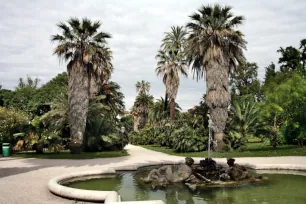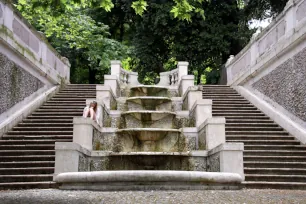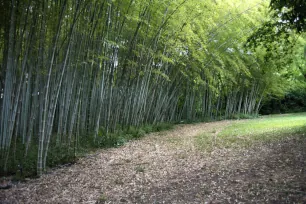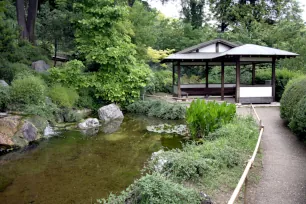Rome’s botanical garden makes for a pleasant respite from the tourist laden city center across the Tiber river. More than three thousand different plant species can be found here on a 12-hectare-large (30 acres) sloping terrain.





The garden was originally the private park of the Palazzo Corsini, a palace that was built between 1732 and 1736 for cardinal Corsini. The garden occupies a flank of the Janiculum, an area that in ancient times contained the Horti Getae, gardens that were probably laid out under Septimius Severus. In 1883 the government acquired the property and created a botanical garden on the Corsini estate. One hundred years later, the administration of the garden was transferred to the Sapienza university of Rome.
Gardens
The botanical garden is laid out in the style of an eighteenth-century landscaped garden. The gardens on the slope of the Janiculum are the most natural. There are no real boundaries between the different gardens, and you sometimes feel like walking in a rural park. On the east side of the Botanical Garden lies the Fern Valley, which leads uphill to the bamboo grove, home to one of the richest collections of bamboo plants in Europe. At the top of the slope is the charming Japanese Garden, where you encounter small waterfalls and a Japanese-style pavilion. The west side of the Botanical Garden is home to a Mediterranean forest that gives a good idea of the vegetation on the hill before human intervention.
The lower level of the Botanical Garden, laid out around a round pond, is more formal. Here you find the flower beds of the Mediterranean Garden, a large collection of palm trees and the “Garden of the Aromas”, with aromatic plants that can be identified by their smell or by touching them. The plants are accompanied by labels in Braille. Another garden worth mentioning is the Hortus Simplicium, a garden with medicinal plants.
Greenhouses
The oldest greenhouse in the Botanical Garden is the Corsini Greenhouse, a small but elegant structure on the east side of the garden’s lower level. The greenhouse is home to a collection of succulents. Nearby is the Monumental Greenhouse, built in 1877. It’s not quite as impressive as its name suggests. The most modern greenhouse is the Tropical Greenhouse near the medicinal garden. It houses both tropical and subtropical plants, including species you find in rain forests.
Fountains

There’s more than just plants in Rome’s botanical garden. An interesting architectural sight is the Scalone Monumentale, a monumental staircase at the foot of the Janiculum hill. The staircase has two flights; between them is a cascade with the so-called “Fountain with Eleven Spout”. The fountain and staircase were created between 1741 and 1744 by the architect of the Corsini Palace, Ferdinand Fuga. From the top of the staircase, visitors had a panoramic view over the Corsini Palace. Today the view is obscured by large trees. One of these is a 350-year-old plane tree.
Between the palace and the Fountain with Eleven Spouts is another fountain: the Fontana dei Tritoni (Fountain of Tritons). It is named for the two Triton statues in the middle of the basin.
- Next: Capitoline Hill
- More Sights & Attractions in Rome

